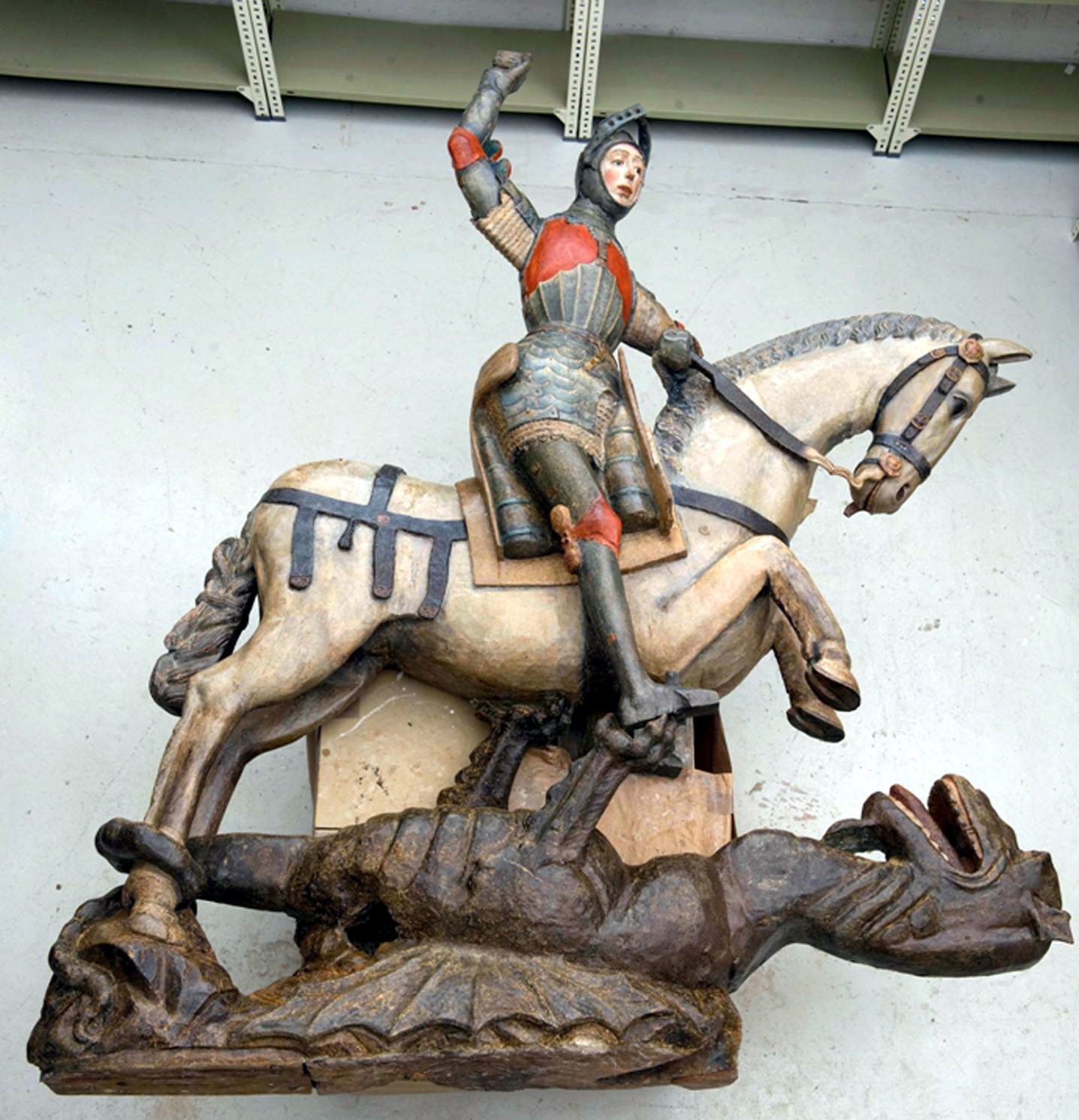
Spanish specialists have managed to fix a badly botched restoration that left a 500-year-old sculpture of Saint George looking like a cartoon character last year. It took three months and $37,000 to restore the statue to its former state.
The Church of San Miguel de Estella in the Spanish province of Navarre had hired a local company to restore the figure, a classical depiction of the Christian martyr on horseback clad in armor and fighting a dragon. But what was supposed to be a subtle intervention left the figure with garish pink skin, flat gray and red armor, and badly painted eyes.
Images of the restoration fail quickly went viral online. It was one in a strong of bad restorations that ricocheted around the web, from Ecce Homo, a comically oversimplified fresco that became known as “Beast Jesus” following an intervention by an amateur restorer, to a day-glo makeover given to a 15th-century religious shrine.
(In the case of Ecce Homo, the outlandishly bad paint job inspired an arts center, an opera, a documentary film, and countless Halloween costumes, bringing an unexpected influx of cash and tourists to its tiny Spanish town. But it appears cartoon Saint George didn’t have the same kind of pull.)
Before and after a misguided restoration on the statue of St. George at Navarre, Spain’s Church of San Miguel de Estella. Photo via Twitter.
The local Spanish government quickly stepped in after the unfortunate restoration of Saint George made headlines. Together with the church, the government had the sculpture moved to an archeological facility to begin work on a re-restoration. The church paid for the repairs.
There was concern that because the apparently amateur restorers had used incorrect paint, little of the 16th-century polychrome underneath would be retrievable. However, after painstaking work, specialists managed to uncover the original material. They studied existing photos and examined X-rays to both see and salvage the paint, in its Hispano-Flemish gothic style, under the new coat.
“It’s been a long process because we had to do preliminary tests and take samples to see how we could go about cleaning it and to determine which would be the best materials and methods,” Carlos Martínez Álava, head of the Navarre government’s historic heritage department, told the Guardian. “Today, the statue has the same colors it had before last year’s extremely unfortunate intervention. But we know that we’ve lost part of the original paint along the way.” Authorities are hoping to return the work to the church in the coming days.
The church and the company that mishandled the first restoration were each fined €6,000 ($6,840). The sculpture is cultural property of the province, so any alterations should have been cleared by authorities.